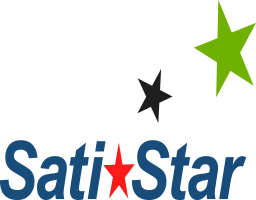Theory of Constraints
Overview
Theory of constraints (TOC) is a body of knowledge on the effective management of (mainly business) organizations, as systems.
It is based on the fact that, like a chain with its weakest link, in any complex system at any point in time, there is most often only one aspect of that system that is limiting its ability to achieve more of its goal. For that system to attain any significant improvement, that constraint must be identified and the whole system must be managed with it in mind.
This approach focuses on reducing inventory, reducing cycle times, increasing throughput and treating manufacturing as a system whose performance in controlled by the bottlenecks in the process.
Scope And Deliverables
In a business environment, the organization’s constraint must be the driving factor in how it is managed. In production, the productivity of the constraint is the productivity of the entire plant.
First introduced in the long-time business best-seller by Eli Goldratt – THE GOAL, a proven approach to managing production through the constraint is known as “Drum-Buffer-Rope” and “Buffer Management.”
- Drum – The constraint(s), linked to market demand, is the drumbeat for the entire plant.
- Buffer – Time/inventory that ensures that the constraint(s) is protected from disturbances occurring in the system.
- Rope – Material release is “tied” to the rate of the constraint(s).
The drum, buffer, and rope provide the basis for building a production schedule that is highly immune to disruption, avoids creating excess inventory, and uses small batches to minimize overall lead time.
But even with “Drum-Buffer-Rope,” occasionally disruptions occur that require special attention. “Buffer Management” is used to mitigate and often prevent those disruptions.
Implementations of “Drum-Buffer-Rope” and “Buffer Management” typically result in “lean,” low-inventory production operations capable of consistently 95% (or better) on-time delivery, lead-time reduction of 35-50%, and inventory reduction of 50%, as well as significantly reduced need for expediting and rescheduling.
All organizations have at least one constraint.
A Constraint is a factor that limits the system from getting more of whatever it strives for. So, in order to increase the desired goals one must manage constraints.
TOC considers the entire system as a chain. To improve the strength of a chain, one must identify the weakest link and then concentrate efforts on strengthening that weakest link. The procedure to to follow in strenthening the chain is to use Goldratt’s Five Focusing Steps:

- Identify the System’s constraints. Here a process is analyzed so that a task or activity that limits the productivity of an entire system can be identified. A system constraint may be identified by a long queue of work or long processing times.
- Decide how to exploit the system’s constraints. In this step, decisions must be made on how to modify or redesign the task or activity so that work can be performed more effectively and efficiently.
- Subordinate everything else to the above decision. Now, management directs all its efforts to improving the performance of the constraining task or activity and any other task or activity and any other task or activity that directly affects the constraining task or activity.
- Elevate the system’s constraint. In this step, additional capacity is obtained that will increase (elevate) the overall output of the constraining task or activity. This differs from step 2 in that the added output comes from additional purchased capacity, such as buying a second machine tool or implementing a new information technology.
- If, in the previous step, a constraint has been overcome, go back to step 1 but do not allow inertia to cause a new constraint.
This sets up a process of on-going improvement. As a result of the focusing process, the improvement of the original constraining task or activity may cause a different task to become a constraining task or activity.
What We Will Do
- Analyze your current business processes in detail to determine where the constraints, or bottlenecks exist.
- Implement the Five Step Process shown above.
- Propose a relevant solution to address the constraint.
- Translate the solution into specific, time-sequenced actions.
- Identify obstacles to implementation.
- Develop a buy-in plan and a detailed implementation plan.
- Assist in the implementation.
- Analyze the new business performance and identify new constraints.
- Provide coaching as needed to ensure that the cycle of improvement is sustained.
What We Need You To Do
- Commit to the TOC project.
- Assign required resources to the project.
- Ensure availability of required resources.
- Provide a suitable working area for the team’s activities.
- Authorize internal personnel to provide the TOC team with needed information.
- Ensure timely review and approval of the TOC team’s recommendations.
- Provide sufficient resources (including IT) to implement the team’s approved recommendations.
- Ensure timely delivery of desired results.
WHAT PEOPLE ARE SAYING
SatiStar's Experience Makes The Difference!
